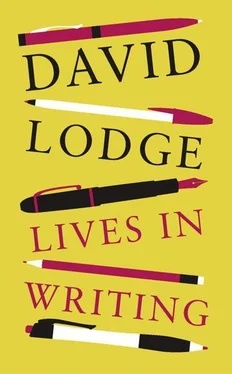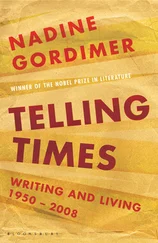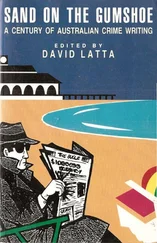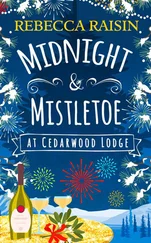When the war ended she sent for Robin, but to her surprise and dismay he arrived accompanied by Ossie, who was not disposed to be co-operative about a divorce. He had resumed Jewish orthodoxy and was inculcating this in Robin to make the child bond with him rather than Muriel, while Robin, one may surmise, already had reason to feel that his mother had deserted him in infancy. Her solution to this imbroglio was to leave Robin in Edinburgh in the care of her mother, and go to London to start a literary career. It was, judged by normal maternal standards, a selfish decision, but it was selfishness for art’s sake. She was convinced that she was born to be a writer and throughout her life allowed nothing to stand in the way of that vocation. For a long time she pursued it as a poet, supporting herself in a variety of low-paid jobs associated with publishing and editing, and by producing literary biographies and anthologies, mostly in collaboration with Derek Stanford whom she met through the Poetry Society. This was then a haven for old-fashioned and mediocre versifiers, with some of whom she had flirtations and affairs, and with others feuds when she became the society’s secretary and the editor of its magazine.
She was in some danger of languishing in this genteel end of Grub Street indefinitely, with no more than a sheaf of rejection slips to show for her poems, when in December 1950 she won a competition for a short story on a Christmas theme sponsored by the Observer newspaper which attracted nearly 7,000 entries. Her story, ‘The Seraph and the Zambesi’, described an angel gatecrashing a rather tawdry nativity play in Rhodesia in a manner both vivid and matter-of-fact, which Stannard plausibly suggests was the first example of magic realism in British writing. It seems to have been also the first piece of prose fiction Spark wrote for publication, and yet it instantly demonstrated that this — not verse — was the medium in which she could fulfil her artistic ambitions. ‘The whole tone of the narrative’, Stannard justly observes, ‘is suddenly lighter than that of the poetry, rippling with crisp, implicit mockery.’ She never was, and never would be, a great poet in verse, but her novels and novellas are essentially poetic in style and structure.
This success was her first taste of fame, but she did not consolidate it rapidly or easily, for reasons to do with her troubled state of body and soul at the time. Stannard is particularly illuminating on this phase of her life, when she was moving towards Christian faith, first in the Anglican and finally in the Roman Catholic Church, conducting an on-off sexual relationship with the much less gifted Stanford, and trying to write her first novel, while keeping solvent, and her name in the public eye, with literary journalism. She wrote a review of T.S. Eliot’s play The Confidential Clerk which astonished the author with its insight, and his praise encouraged her to begin a critical study of Eliot’s work, but she was overdosing on Dexadrine in order to suppress appetite and work longer hours, which had the effect of making her temporarily deranged and convinced that Eliot’s writing was full of coded threatening messages to herself. All these experiences entered into her first novel, including the struggle to write it. The Comforters is about a young woman recently converted to Roman Catholicism who is having a nervous breakdown which takes the form of hearing an authorial voice tapping out on a phantom typewriter a prejudicial description of her thoughts in the novelistic third person. We would learn to call this ‘metafiction’.
The Comforters was greatly admired when it was published in 1957, especially by Evelyn Waugh, who was struck by its similarities to The Ordeal of Gilbert Pinfold which he was currently writing. Graham Greene, who had already been impressed by some unpublished stories he had been shown by Stanford, and was generously giving Spark financial help, added his praise. These were the two most distinguished living English novelists at the time, and both Catholic converts. Muriel Spark ‘completed a grand triumvirate of Catholic-convert novelists’, Stannard declares at the outset of his book, but the Catholicism expressed in her fiction is very different from Waugh’s unquestioning orthodoxy or Greene’s obsession with sin and salvation — much more playful, speculative, and unsympathetic to typical Catholic piety. The dogmatic certainties on which the ‘Catholic Novel’ was based were, however, soon to be called into question by the Second Vatican Council and the emergence of a much more pluralistic Church than the one she originally joined, so her increasingly idiosyncratic Catholicism caused less of a stir than it might otherwise have done. She openly criticised the papacy, for instance, did not attend mass regularly, and always avoided the sermon when she did. Her attraction to the Faith was basically metaphysical: she liked the idea of a transcendental order of truth against which to measure human vanity and folly, and was fascinated by the similarities and differences between the omniscience of God, the fictive omniscience of novelists, and the dangerous pretensions to omniscience of human beings like Miss Brodie. Sub specie aeternitatis human life was not tragic or pathetic, but comic or absurd. ‘I think it’s bad manners to inflict a lot of emotional involvement on the reader — much nicer to make them laugh and to keep it short,’ she told an interviewer in her deceptively insouciant style. This is what Kermode meant by the ‘cold’ quality of her work. In real life it could be disconcerting: he recalls that she could not see why a party he planned to give in New York in her honour should be cancelled because President Kennedy had been assassinated the day before, since ‘he was only dead because God wanted him’. She was not, however, indifferent to the problem of reconciling the evil and suffering in the world with the idea of God — indeed she considered it ‘the only problem’ in theology. But, drawing on her Jewish heritage, she approached it through the Old Testament rather than the New, especially the book of Job, where God himself in her view becomes an absurd character.
Stannard sums up the relation between Spark’s metaphysics and her fictional innovations perceptively: ‘there was human time and there was God’s time. She played with these two spheres of reality: using ghost narrators, revealing endings to destroy conventional suspense, starting at the end or in the middle, fracturing the plausible surfaces of obsessive detail with sudden discontinuities.’ This daring deconstruction of the traditional realistic novel (and the realistic noir thriller) was most extreme in a sequence of short, spare novellas she produced in the late 1960s and the 1970s such as The Driver’s Seat (her personal favourite among her fictions) and Not to Disturb. In the former a woman pursues across Rome the man who must murder her; in the latter a butler presides over a crime of passion in a Swiss villa in a manner that is both God-like and Jeeves-like. Among other things they helped to make present-tense narration, hitherto rarely used by novelists, almost the default mode of contemporary fiction. The general public and some reviewers found these books baffling, and she had more commercial success later with novels like Loitering with Intent and A Far Cry from Kensington that drew on her early life to the same droll effect as the early novels.
After scraping through the dreaded test of the second novel with Robinson (1958) she produced, at the rate of one a year, a sequence of scintillating novels from Memento Mori to The Girls of Slender Means , while living in the unfashionable London suburb of Camberwell under the protection of a motherly landlady, and making occasional, not very enjoyable duty visits to her family in Edinburgh, who she felt exploited her increased prosperity. It was perhaps partly to put them at a distance that in the late 1960s she based herself for long periods in New York, occupying an office of her own at The New Yorker . Later she settled in Rome, where she lived for many years in some style, escorted by a series of ornamental but usually gay or bisexual men. Stannard surmises that ‘she did not discover their sexuality until too late’ but one feels that, although she enjoyed dressing up glamorously and exerting her spell over men, subconsciously she did not want to be possessed by them and chose her male companions accordingly. From 1968 onwards she became more and more dependent on her friendship with Penelope Jardine, an artist resident in Rome, who acquired a derelict priest’s house and adjoining church in Tuscany and converted them into a home where Muriel eventually joined her, with Penelope, who was fifteen years younger, acting as her companion and secretary. Spark calmly denied they were lesbians, but Stannard says it was love that bound them together. Perhaps ‘a Boston marriage’ best describes their relationship. Muriel bought a series of automobiles in which she enjoyed being driven around Europe by Penelope, who had a fear of flying.
Читать дальше












